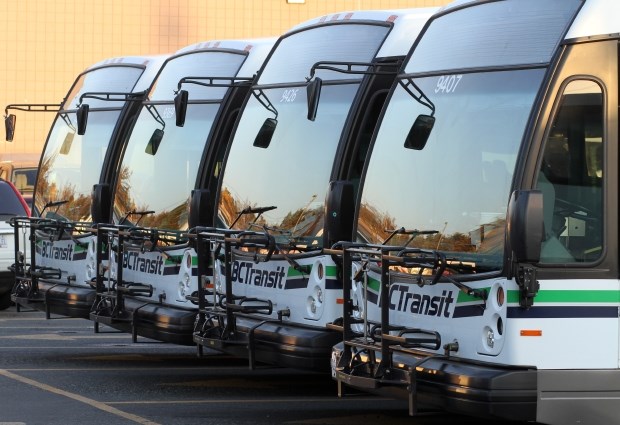Public transit plays a vital role in our urbanized societies, one that is particularly important for people who don’t have a car. That includes people with low-paying jobs as well as many children, youth, university and college students and seniors. It helps them get to and from work and to access amenities and services.
Good public transit also reduces congestion, leading to more economically efficient cities, because there is less time and energy wasted in traffic jams. In the U.S., traffic delays due to congestion consumed 3.7 billion hours in 2003, and time is money.
Beyond these obvious benefits, many public health benefits also result from good public transit. But first we need to understand the health impacts of transportation in general, especially in cities.
One of the world’s leading experts on this issue lives in Victoria. Todd Litman, director of the Victoria Transport Policy Institute, did a review of transportation and health for the prestigious Annual Reviews of Public Health in 2013. He noted that the main health problems associated with transportation include deaths and injuries from traffic crashes, heart and lung diseases due to air pollution, reduced physical activity and increasing obesity, mental-health impacts and lack of access to health-related goods and services.
A 2014 World Bank report found that about 1.3 million people die every year as a result of road traffic crashes and a further 78.2 million people suffer non-fatal injuries. Between age 1 and 59, road injuries are among the top 10 causes of death. As the world urbanizes and industrializes, the toll rises; deaths due to motor vehicles have increased almost 50 per cent in the past 20 years.
The World Bank also estimates that 184,000 deaths annually are caused by air pollution due to vehicles; other estimates suggest it is much higher, closer to the number of deaths due to injuries. Overall, road traffic causes more deaths than such traditional causes of concern as HIV, TB or malaria.
A third major concern is reduced physical activity and increased obesity. Physical inactivity is linked to our car-dominated society and the urban sprawl that it encourages. Increased car use is associated with reduced physical activity and increased obesity, which results in more ill health and early deaths.
The mental and social health impacts arise in part from the sheer amount of time we spend in vehicles. In Canada, we spend about an hour a day in vehicles on average. A daily commute of one hour each way amounts to about 40 hours a month, or a full working week each month.
Moreover, research has shown that stress levels increase as commuting time increases, but less so in those commuting by train rather than in cars. One study showed that improved transit that led to reduced commute time also led to reduced stress.
Finally, all that gasoline used in driving is a source of carbon dioxide, contributing to global warming and climate disruption, with all the negative health consequences that ensue.
So how can public transit improve this situation? First, it is a lot safer. The number of people killed per passenger mile is an order of magnitude (tenfold) smaller. Second, it’s a lot cleaner; less air pollution means fewer deaths and a reduction in greenhouse-gas emissions. Third, transit users walk and bike more, so are more physically active and fitter. Fourth, as noted above, transit use is less stressful, even if it does not necessarily reduce the length of time spent commuting.
Transit plays an important social role we don’t often consider. Former Toronto mayor John Sewell highlighted this for me in the 1980s, when he described Toronto’s public transit system as “the great democratizer.” By this he meant that everybody — young and old, rich and poor, black and white, male and female — rubbed shoulders with each other daily, and had to learn to get on with each other. It’s an interesting way to think about public transit.
So if I were in Vancouver, I would definitely be voting Yes in the transit referendum this month — it’s just good public health policy.
Dr. Trevor Hancock is a professor and senior scholar at the University of Victoria’s school of public health and social policy.



